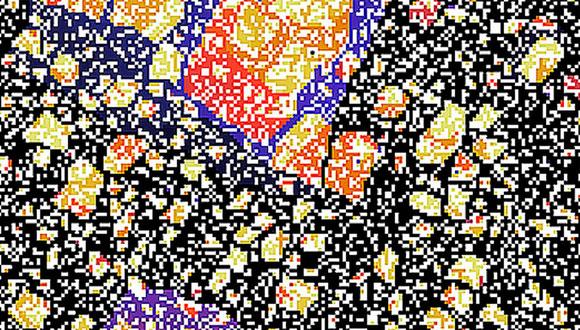Biological & Soft Matter Seminar: Erosion of a polymer surface by an enzymatic solution. Application to the fragmentation of plastics in the ocean
Prof. Pascale Fabre, Université de Montpellier, CNRS, France
Abstract:
Pollution of the ocean by plastic litter has become a major environmental problem : when mismanaged, plastics enter the environment where they undergo degradation and fragmentation into microplastics that are now ubiquitous in all aquatic compartments.
The fate of polymers in aquatic environment depends both on abiotic phenomena (UV, mechanical stress), and on biotic ones, due to the colonization of plastics by micro-organisms. A primary step for bio-degradation is the constitution of a biofilm and reduction of the polymer chain length via exo-enzymes produced by bacteria from the biofilm. Once polymer chains are short enough, they can be assimilated by bacteria. In the marine environment, many questions remain about the relative kinetics of abiotic and biotic degradation and their respective impact in terms of fragmentation.
We studied the enzymatic erosion process in semi-crystalline polymers in order to understand the potential fragments generation in relation to the formation of erosion patterns. Being specifically interested in the role of heterogeneities at the scale of a few micrometers, we used a polymer of a given chemical composition and monitored its microstructure through its change in crystallinity ratio. We used the well-known model system PLLA/proteinase K. Enzymatic erosion kinetics were measured through weight loss experiments and erosion patterns were observed over time through atomic force microscopy (AFM) and SEM.
In order to interpret the results, we developed a simple two-phase geometric erosion model, which is based on the evolution of the erosion front with time induced by the erosion rate difference between crystalline and amorphous regions. This model accounts very well for the experimental results and unexpectedly predicts that after a lag time, the final erosion rate will be the one of the fastest eroding phase. Moreover, we observed a morphology-dependent release of fragments, which the model is also able to predict. In particular, one observes the release of spherulites as long as they are smaller than a critical size determined in the model. Some important consequences relevant for the understanding of the formation of micro-plastics in the ocean can be drawn from these results.


